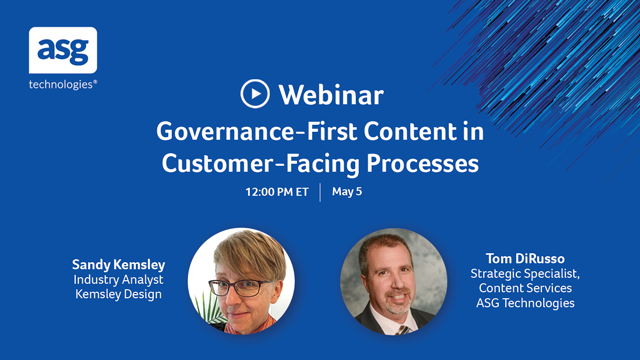I’m definitely a process person, but my start in the business was through document-driven imaging and workflow systems. It’s important to keep in mind, no matter where you lie on the spectrum of interest between process and content, that they are often intertwined: unstructured content may be a driver for process, or be the product of a process. Processes sometimes exist only to manage the content, and sometimes content only exists as supporting documentation for a process. A few years ago, I wrote about several of the process/content use cases that I see in practice for the Alfresco blog.
One thing I didn’t cover at that time is the use of processes (and rules) to govern access to content: although a good content management system will let the right person see the right content, not all unstructured content is stored in a content management system at all, much less a good one. Even if content is in a content management system, it may not be appropriate to just let everyone root around in there to find whatever documents that they might want to see. Access to content is often contextual, that is, when someone is acting in a certain role and performing a certain task, they should see specific content. In another context, they might see different content. This is even more important when you open up your processes and content to external participants, including customers and business partners.
I’ve had the chance to talk about some of these ideas in more detail in a couple of places. First, my most recent guest post on the Trisotech blog is called In financial services, process rules content, and looks at how this can work in financial applications such as insurance underwriting:
There are a lot of laggards [which have] a somewhat disorganized collection of content related to and created by processes, stored on multiple internal systems, with little or no internal access control, and no external access. In fact, I would say that in every insurance and financial operation that I’ve visited as a consultant, I’ve seen some variation of this lack of content governance, and the very real impacts on operational performance as well as privacy concerns. This is definitely a situation where process can come to the rescue for getting control over access to unstructured content.
Secondly, I’m presenting a webinar and writing a short paper for ASG Technologies on content governance in customer-facing processes. The webinar will be on May 5th, and the white paper available as a follow-on shortly after that. You can register here to attend. Hope to see you there!

